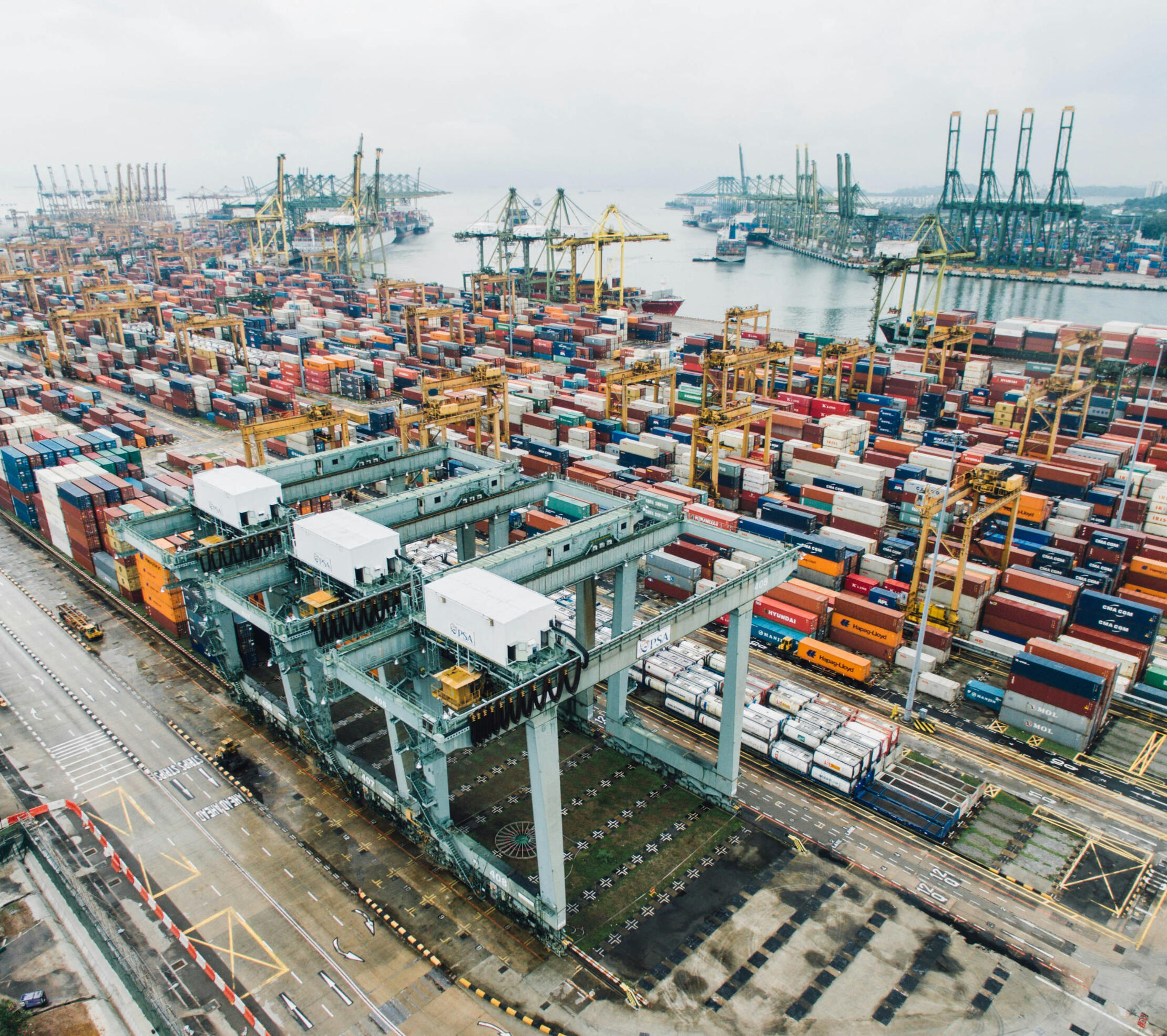
Canada & Mexico
With the shifting environment in the USA, we help companies move their operations to Canada and Mexico as seamlessly as possible
Sell in the US, work from Canada & Mexico
Canada Program
Our organization has built strong relationships with Canadian trade offices, consulates, and provincial investment agencies to support clients establishing operations in Canada. We assist businesses in relocating or expanding their warehousing, logistics, and manufacturing facilities to take advantage of Canada’s stable economy, trade agreements, and access to global markets. Canada offers a range of federal and provincial programs designed to attract foreign direct investment (FDI), support innovation, and facilitate immigration for skilled talent — all of which we help our clients navigate to ensure a smooth and strategic entry into the Canadian market.

Fast-Track Work VISA
The Global Skills Strategy provides two-week work-permit processing for high-skilled foreign workers in management, professional, and technical occupations (mostly under NOC TEER 0 and 1). It also allows employers on the Global Talent Stream (see below) to skip lengthy Labour Market Impact Assessments (LMIAs) for qualifying roles. When a company sets up a Canadian facility, it can move engineers, technicians, or project managers in weeks instead of months — speeding up plant commissioning, R&D lab setup, or IT infrastructure deployment.
GTS
A sub-program of Canada’s Temporary Foreign Worker Program, the GTS allows designated employers (and new FDI investors) to hire foreign workers in specific tech-focused or highly skilled occupations under simplified LMIA rules. Employers commit to a Labour Market Benefits Plan (e.g., creating local jobs, knowledge transfer).
Processing is two weeks for both LMIAs and work permits.
Tech and advanced manufacturing investors use this stream to import critical startup teams — software engineers, robotics specialists, or semiconductor experts — during the ramp-up phase, while local hiring pipelines are being developed.
Start-Up Visa Program
This permanent-residency pathway targets foreign entrepreneurs with innovative business ideas supported by a Designated Canadian Angel Investor, VC, or Incubator.
Once endorsed, the entrepreneur can relocate to Canada with a work permit while PR is processed (typically 12–18 months). SUV attracts high-growth, innovation-driven founders and aligns with Canada’s innovation-cluster strategy. For investors, it ensures a steady inflow of new ventures and tech startups feeding local ecosystems (especially Toronto-Waterloo, Vancouver, and Montreal).
Intra-Company Visa
Multinational companies can transfer executives, senior managers, or specialized-knowledge employees from their foreign branches to a Canadian affiliate without an LMIA. Work permits are typically valid for 1–3 years and renewable.
Why it matters for FDI:
It lets investors seed new Canadian operations with trusted leadership and technical teams immediately after establishing a subsidiary — an essential step when building or integrating a new facility.
SIF
SIF provides conditional repayable and non-repayable contributions for large, transformational projects (minimum project thresholds apply). It’s designed to attract strategic, capital-intensive investments (advanced manufacturing, semiconductors, cleantech, large-scale facilities) by partially funding capital costs and enabling firms to compete on economics vs. other countries. Typical process: statement of interest → full application → due diligence → contribution agreement.
CTM ITC
Federal refundable investment tax credits (ITCs) apply to qualifying investments in clean tech manufacturing, processing and some critical-minerals/clean-energy equipment. These credits lower effective capex by providing a refundable tax credit (often a percentage of eligible equipment costs) and are used to make domestic manufacturing investments more competitive. The program scope and eligible equipment lists are set by CRA / Budget legislation.
Minerals Strategy
Canada’s Critical Minerals Strategy bundles targeted funding, tax credits (e.g., Critical Mineral Exploration Tax Credit / CMETC and other supports), RD&D programs, and a federal Critical Minerals Centre of Excellence (concierge) to guide investors and connect projects to funding, permitting help and Indigenous engagement processes. This is actively promoted to attract investment in upstream and midstream critical-minerals value chains (processing, refining, battery materials).
EDC
EDC provides trade finance, guarantees, foreign-buyer financing, political-risk insurance, and structured solutions that support exporters and foreign investors working with Canadian supply chains. EDC also runs targeted programs (e.g., Trade Impact Program, supply-chain webinars/advisory) to help firms manage trade uncertainty and scale Canadian sourcing. EDC is often a financing and risk partner for projects that need working capital, export credit or buyer financing.
Innovation Fund
Innovation Canada (a portal) and programs like NRC-IRAP (National Research Council industrial assistance), regional development agencies and other R&D supports provide grants/advice to help firms commercialize and integrate advanced manufacturing/R&D in Canada. These are especially relevant when supply-chain moves require local product engineering, automation or process modernization.
Tax Support
The federal government offers tax credits and exploration-focused incentives (e.g., the Critical Mineral Exploration Tax Credit and other flow-through share measures) to attract investment into mining/exploration and early-stage upstream supply-chain inputs. These improve the economics of resource-sector investments that supply batteries, semiconductors and advanced manufacturing.
Trusted Trader
CSA, and FAST for U.S.-Canada carriers) plus the multi-year CARM digitalization initiative streamline and speed cross-border clearance for pre-approved, low-risk importers. For supply-chain projects these lower lead-time variability and reduce border friction for frequent cross-border parts flows. Firms apply to PIP/CSA, meet security/compliance standards, and then get simplified accounting and faster releases.
NTCF
The NTCF funds infrastructure projects (ports, rail, roads, intermodal hubs) to reduce bottlenecks and speed freight. For companies moving supply chains, NTCF investments lower transport friction and improve predictability for north-south / trans-Pacific routes. Project sponsors apply for calls for proposals; the fund supports public-sector or public-private projects that address capacity constraints.

Mexico Programs
Our organization has established connections with consulates and business attache's to help our clients establish themselves in Mexico with full support.
We help move warehousing, logistics and manufacturing operations to avoid tariffs and retain access to the North American market.
The Government of Mexico has programs built for attracting FDIC that we help out clients navigate.
IMMEX
A long-standing manufacturing/export regime that allows companies to temporarily import raw materials, components and capital goods into Mexico without paying import duties or VAT, provided the finished goods are exported (or otherwise meet the program’s rules). IMMEX is the primary fiscal/customs tool firms use to set up export-oriented manufacturing (shelter providers and maquiladoras operate under IMMEX). It reduces cash-flow and tax friction for assembly and nearshoring operations.
Why it matters for supply chains: lowers upfront import taxes and speeds customs clearance for parts and tooling that are only here temporarily — making Mexico competitive for regional and global manufacturing. Note: IMMEX participation requires compliance with program obligations; authorities have in some recent cases cancelled non-compliant IMMEX registrations, so compliance and documentation are essential.
Tax Incentives
What it is / how it works: the federal government periodically issues presidential decrees and tax-incentive packages that grant preferential tax treatment (credits, accelerated deductions, exemptions or special rules) to projects in priority sectors — examples recently emphasized include semiconductors, EVs / battery production, aerospace and advanced electronics. These incentives are often time-bound and linked to specific regions or “strategic” activities. Companies apply through the Secretariat of Economy and comply with the decree’s conditions to receive the benefit.
Why it matters: targeted tax credits materially change the after-tax economics of high-capex projects (semiconductors, batteries, EV parts), making Mexico more competitive vs. other nearshoring destinations.
VUI MX
What it is / how it works: a single-window digital and human assistance service run by the Secretariat of Economy that guides investors step-by-step through permits, registrations, immigration/work-permit issues, customs, and inter-agency coordination. It’s a free public service designed to reduce red-tape and to coordinate federal / state / municipal processes for establishing operations. The VUI also includes a public registry of investment projects and a case-management function.
Why it matters: reduces time and uncertainty when relocating supply-chain operations (permits, import/export formalities, local registrations). Investors use the VUI as their “first contact” and to get matchmaking help with local suppliers. The VUI has been promoted as Mexico’s main investor concierge.
Business Center
Institutionalized investment-promotion teams within the Ministry of Economy and related agencies (sometimes branded locally as “Invest in Mexico” or similar) provide market intelligence, site selection help, introductions to local suppliers, commercial intelligence and sometimes temporary office space within government facilities to host investor meetings. They also coordinate with Mexican diplomatic posts overseas to attract leads.
Why it matters: practical on-the-ground matchmaking (finding local vendors, suppliers, and logistics partners) and intelligence (labor pools, cost comparisons, incentive availability) are crucial when moving supply chains.
Special Zones
Beyond federal schemes, individual states and municipalities offer land packages, tax rebates, payroll incentives and local permitting fast-track programs. Recently the federal government has supported the creation of “Welfare Industrial Zones” (zonas industriales de bienestar) with targeted tax incentives in locations such as Yucatán; states also run their own incentive packages for strategic investors. Investors negotiate these directly with state economic development agencies (often coordinated via the VUI).
Why it matters: site-level costs (land, property tax, local hiring incentives) often determine where a plant locates inside Mexico. Combining federal (IMMEX, tax decrees) and state incentives optimizes project economics.
Export Support
Bancomext (Banco Nacional de Comercio Exterior), Nacional Financiera (Nafin) and other development banks provide loans, guarantees, export financing, and structured finance for manufacturing, logistics and export projects. They also issue bonds to support trade/supply chain financing and run credit lines for SMEs in export supply chains. These institutions support both Mexican suppliers and foreign investors who need on-the-ground financing partners or working-capital solutions for local operations.
Why it matters: supply-chain relocations often require working-capital, capex and trade finance; having government-backed lenders available helps projects scale and de-risk local sourcing.
SME Development
Federal and state programs — sometimes supported by multilateral lenders (e.g., IDB/MIF) — provide training, technical assistance, grants and VC co-investment to develop local suppliers, upgrade capabilities, and connect SMEs into global value chains. This includes funds for supplier development, digitalization programs, and export promotion for SMEs. Development agencies also back venture funds and credit lines targeted at SMEs that are part of export supply chains.
Why it matters: investors relocating parts of a supply chain need reliable local suppliers. Programs that upgrade supplier quality and provide finance make the local ecosystem more attractive.
Customs Simplification
Mexico has been implementing single-window approaches and digital filing systems to streamline customs and cross-border paperwork so that traders submit data once and reuse it across agencies. This reduces delays, speeds clearance, and lowers transaction costs for parts, tools and finished goods crossing borders.
Why it matters: reliability at the border (predictable clearance times, fewer inspections) is essential for just-in-time or regional supply chains.

Contact us
Email us your enquiry or set up a meeting with one of our members to find solutions.